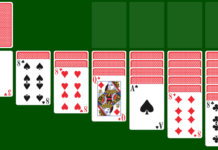
We start from the premise that there is no single way to play poker. In fact, the same player can – and should – show different facets and strategies throughout a game, identifying himself with different types of player.
The legendary Amarillo Slim used to say: “Look around your table, if you don’t know who the cousin is, then it’s you”. And the truth is, we couldn’t agree more. In a poker game, your strategy is as vital as identifying the players who are with you on the green table. Knowing your game and that of your opponent’s brings many benefits in this magnificent game.
Although it is difficult to include all players in a few profiles, we can establish, broadly speaking, types of poker players based on how they face the moves. These responses are so emotional and so unconscious that we can speak of types or profiles of players.
While it is true that the most experienced players are able to remain completely unchanged in both favorable and unfavorable situations, for those of us who have not yet reached that level of control, we can identify with some of these types of players. Find out what they are and get to know yourself in poker.
As EasyPPPoker – the best poker app to play online poker and learn to recognize each type of player – tells us we can find four types of players divided into two large groups: tight and loose. In turn, both in the tight and loose groups, we find the aggressive and the passive, adjectives that define their way of playing.
Passive tight player

Also known as “rocks”, we can identify with this profile if we choose to play little and play passively. What does this type of game translate into? Little profit, but safe.
The passive tight profile only risks if he is 100% sure that he is going to win. Thus, their bankroll does not suffer great alterations throughout the game. They risk little, so they also win little. They are the target of all bluffs, withdrawing before strong cards with which, perhaps, they do not even form a pair at the end of the hand.
The great disadvantage of being a passive tight player is that you can be too conspicuous. It is a very recognizable profile and, even if you face complete strangers, a few hands will be enough for your opponents to identify you with this type of player.
For those of you who feel passive tight, a piece of advice is to lose your fear of betting. The famous phrase “if you don’t bet, you don’t win” is very appropriate for passive tight players. Their pots are usually not very big at all. As for the opponents, when you meet this profile, if you are to the left of a passive tight, take advantage to take all the blinds possible. In case they pass the flop, be on your guard, because they have a good hand.
Aggressive tight player

Beware of aggressive tight players. They are tough players, real referents in this game. The reason? They are extremely selective and tend to raise the stakes if they are confident. Aggressive tight players will not make it easy for the rest of the opponents.
Unlike tight-passives, who tend to call the bets when they are safe, aggressive tight players raise the bets, playing the cards very strongly. Their selectivity is the result of their extreme observation, which leads them to bet at the best moment and, almost always, infallibly. This effectiveness in their bets has earned them the nickname of “sharks”.
Upon detection of one of these sharks, many of the rivals end up withdrawing because they know that, most likely, they will be devoured by these tight-aggressive players.
Passive loose player

Passive loose players love to play as many hands as possible. Thus, they bet a lot pre-flop and make a lot of post-flop bets. Unlike tight players, passive loose players will go all the way to the final hands even if they have no chance of winning. Therefore, odds calculations are quite indifferent to them.
Also known as call station, they are very much appreciated at the poker tables, both in face-to-face games and online.
As we can imagine, these players are driven by their passion for this game and seek to have fun above all else. That is why their winnings are minimal and they tend to lose in most cases. But does it matter? Not for a passive loose player.
Aggressive loose player

Like the passive loose players, these players will go to a lot of hands, but, as their name indicates, in an aggressive way, with a lot of re-raises and bluffs.
It is necessary to be cautious with these players, since, if they have assimilated their game very well, they can be dangerous and become real leaders on the table. They are a profile that creates a lot of action, adding excitement to every game. Although, it is precisely for this reason that many wish not to encounter this type of player. Their eagerness to play so many hands make them unpredictable and difficult to decipher. Very fond of bluffing, they will try to score as many as they can. In case you find yourself with this profile, arm yourself with patience, and be selective in your plays to make a safe bet.
But is there a better way to play than another? The truth is that, if you want to be a good poker player, try to adapt to the players you face at any time. Observe them and try to identify their style of play.
In the case of beginners, an aggressive game is recommended, but with all the virtues of tight: bet when it is clear to you, but do it hard. This is a good way to guarantee rewards and profits. Once you have gained experience and feel more confident, start defining your style and, above all, now that you know what types of poker players there are, hunt your opponents and get all the chips.
















